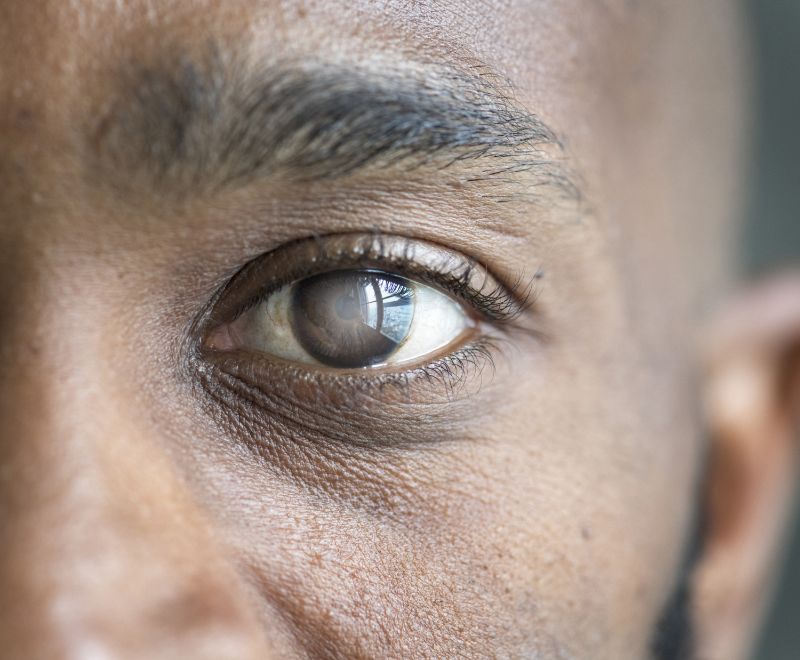
When cataracts develop, the eye’s natural lens becomes cloudy, leading to blurry or distorted vision. Cataracts are typically age-related and can develop slowly over time. Symptoms of cataracts may include blurry vision, sensitivity to light, and difficulty seeing at night.
Aging is the most common cause of cataracts since the eye lens proteins start to break down over time, leading to blurry and cloudy vision. However, other factors, such as genetics, eye injuries, and long exposure to sunlight, can also contribute to the development of cataracts.
Regular eye exams are the best way to identify cataracts in the earliest stages. Cataract treatment often involves surgery to remove and replace the eye's lens that has become cloudy.
Cataracts occur when the proteins in the lens of the eye clump together, causing cloudiness or opacity in the lens. Normally, the proteins in the lens are arranged in a precise way that keeps the lens clear and allows light to pass through it easily.
Eye lens proteins allow light to pass through. When cataracts occur, these proteins clump together, causing opacity and blurry vision. Constant exposure to UV radiation, aging, and other factors can cause the lens to become cloudy.
Several types of cataracts affect different parts of the eye’s natural lens.
The symptoms of cataracts may include:
Cataract signs are slow to manifest and may be unnoticeable until they reach a more advanced stage. Regular eye checkups are important to identify silent symptoms and promptly start with the appropriate treatment.
Although the most common cause of cataracts is aging, some other factors include the following:
Cataracts involve the natural deterioration of the proteins in the eye's lens, which often happens as one ages. Other factors that increase your risk of developing cataracts include
Cataracts are diagnosed through a comprehensive eye exam, which typically includes:
If cataracts are detected, your eye doctor may perform additional tests to determine the severity of cataracts and the ideal treatment for your case.
Although cataracts can only be removed with surgery, other treatments like home remedies or prescription glasses can help manage its early stages:
If your cataracts have progressed into a late stage, your doctor may recommend surgery to remove them.
During the procedure, the clouded lens is removed and replaced with an implant. This is a common procedure and usually takes up to 30 minutes to perform.
To replace your clouded lens with a clear artificial one, your doctor may perform one of the following procedures:
Although no actual studies have determined how to prevent cataracts, doctors often provide helpful strategies to maintain a healthy vision, including
EyesNY offers treatment to help patients slow or stop the progression of cataracts. Our specialized team of ophthalmologists is ready to assess your needs and give you the high-quality vision care you deserve.
We work with cutting-edge technology to identify the root cause of your condition and create personalized treatment plans. Our caring staff is ready to welcome you and meet your ocular health and vision needs. We offer comprehensive eye care services, including cataract surgery, and treat all types of eye conditions and diseases.
If you’d like a consultation or more information, contact us, request an appointment online, or visit our clinics. We have multiple locations around New York, including Malta, Clifton Park, Troy, Saratoga Springs, and Queensbury.
Malta
658 Malta Ave., Ste 101
Malta, NY 12020
Phone: (518) 580-0553
Saratoga Springs
414 Maple Ave Ste 200
Saratoga Springs, NY 12866
Phone: (518) 580-0553
Clifton Park
1712 U.S. 9
Clifton Park, NY 12065
Phone: (518) 580-0553
Queensbury
535 Bay Road
Queensbury, NY 12804
Phone: (518) 580-0553
Troy
2200 Burdett Street Ste 206
Troy, NY 12180
Phone: (518) 580-0553
